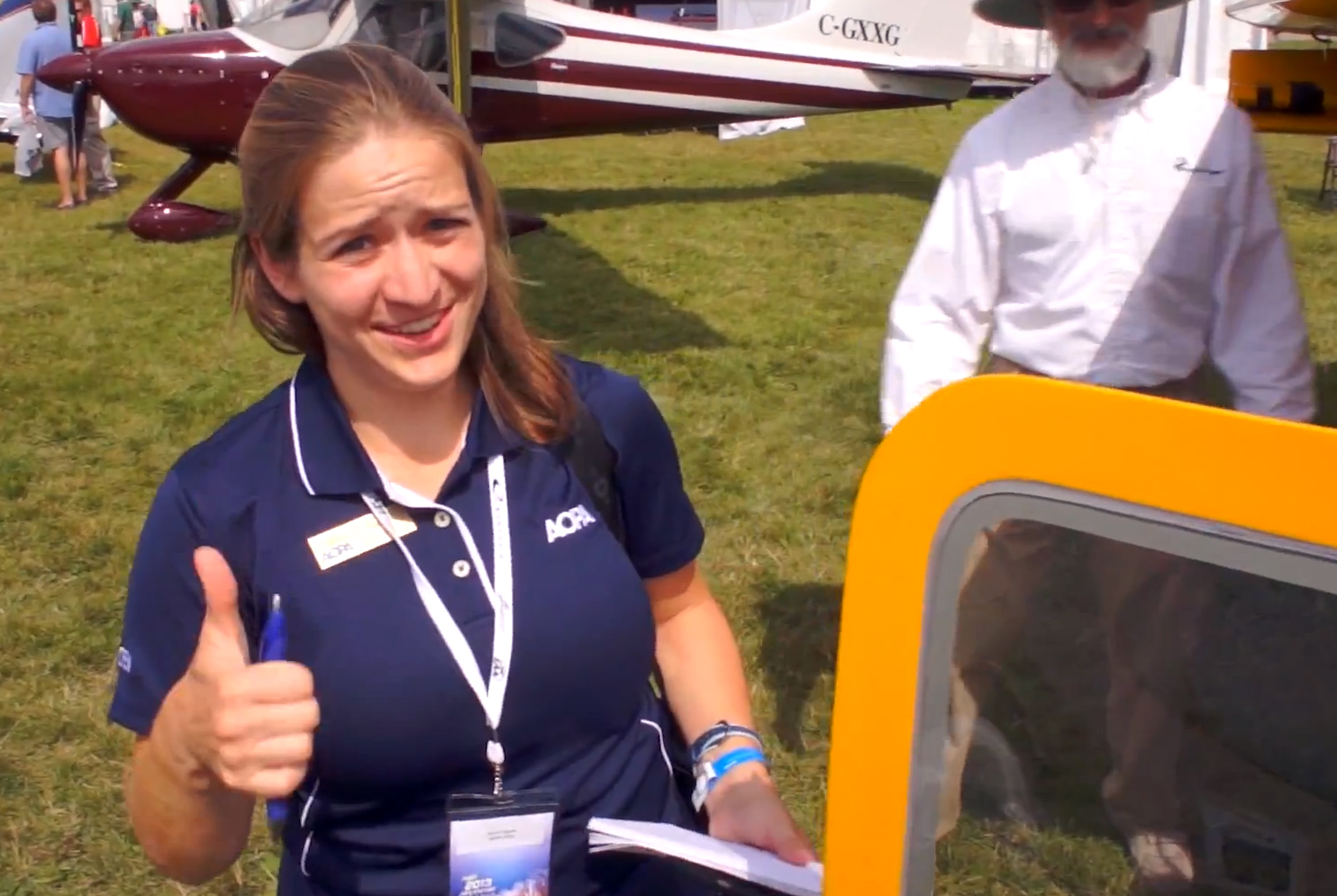October 4, 2013 • By Sara Deener, AOPA News
In July, it took 44 minutes to make the switch between airworthy and roadworthy. Trey Johnson hopes to winnow that down to 15 minutes, and the folks at Specialty Aero in Creswell, Ore., are working to make that a reality for the Plane Driven PD-2, a conversion kit for the Glasair Sportsman that offers the capability to “Fly above the traffic… drive through the weather.”
At EAA AirVenture 2013, the distinctive vehicle was greeted by stares, waves, and cameras even among a crowd accustomed to unusual homebuilt creations. Johnson invited me to take a spin from the Glasair exhibit to the EAA museum and back with him so he could show off how the PD-2 handled on the road.
Engine noise filled the cockpit, but the propeller stood stationary in front of us. It wasn’t the only thing that felt a bit off as we pulled out of the exhibit space under power of a 50-horsepower Kawasaki engine—there were the rearview mirrors, too, and the orange switches in the cockpit labeled “Fly” and “Drive.” With the switches set to “Drive,” we set off.
Passing the Terrafugia tent, he honked. Phil Meteer, who had recently piloted the Transition roadable airplane for spectators at the show, looked up and waved. In the realm of flying cars, the major ones flying today—Maverick, Terrafugia, and the PD-2—are all very friendly, Johnson said.
“We realize the more of us the better at this point. … They’re all designed for different purposes,” he said.
Airplane first
While it’s one of an emerging class of roadable aircraft, the PD-2 caters to homebuilders who want to take their aircraft to another level. It is, first and foremost, an airplane. It has few of the creature comforts we often expect from cars—power steering, sound-dampening insulation, airbags—but can get you from Point A to Point B when the weather rolls in.
It cruises at 60 mph, up to about 73 mph, on the road, Johnson said. On a recent trip from Fort Myers, Fla., to Seattle, the Plane Driven team kept the PD-2 in drive mode for a 1,000-mile stretch from Rapid City, S.D., to Moses Lake, Wash., until weather improved.
As an airplane, it’s quite capable: Johnson said it cruises at 140 mph true airspeed at 75-percent power and has a 1,100-pound useful load—enough to carry two adults, full fuel, 50 pounds of bags, and the “power pod,” which affixes to the rear of the aircraft like a beefed-up tailwheel to drive it on the ground but stows in the baggage compartment in flight. The 192-pound pod shifts the center of gravity aft, but is still within limits.
“It’s just a great little plane,” Johnson said.
He said that instead of reinventing the design, he started with a proven airframe and strove to introduce no new points of failure in flight—the electrical systems remain separate. His “dirt-simple philosophy” stems from experience flying utility aircraft such as Beavers and Otters, he said.
One must drive the PD-2 defensively, like a motorcycle. (Johnson and his team at Plane Driven LLC plan to certify the road kit as a motorcycle, although the prototype he drove in Oshkosh is classified as a trike.) It’s easy to forget that the structure is almost 8.5 feet wide and nine feet, four inches tall. Johnson slowed to check the clearance of the overhang at the entrance to the EAA museum as a woman pulled out a camera.
“Everything about it, you got to remember it’s a plane,” he later explained.
Build your own
Johnson and the Plane Driven team have begun to produce the first production road kit to market as an add-on to the Sportsman kit; buyers would build the base aircraft in Glasair’s Two Weeks to Taxi program, get it inspected for its airworthiness certificate, and then add the roadable kit for another inspection to make it street legal.
It will join a number of options for the customizable Sportsman; Johnson pointed out that the PD-2 was among different configurations of the versatile airplane featured at the Glasair exhibit at EAA AirVenture—including tundra tires and floats as well as the standard nosewheel and tailwheel. A buyer could use the roadable kit all winter, he said, and then switch to floats in a day for summer flying.
The base aircraft will cost builders about $210,000, including the assisted build process, he said, and he estimated the roadable kit will cost about $60,000. The build-your-own roadable airplane market is admittedly small, but Johnson said it offers valuable flexibility; pilots could keep their airplane at home, and they could also avoid being stuck at an airport when bad weather rolls in.
“If you go far enough, you’re going to hit some bad weather,” he said.
For more information on Plane Driven, visit planedriven.com or email Johnson at trey@planedriven.com.

